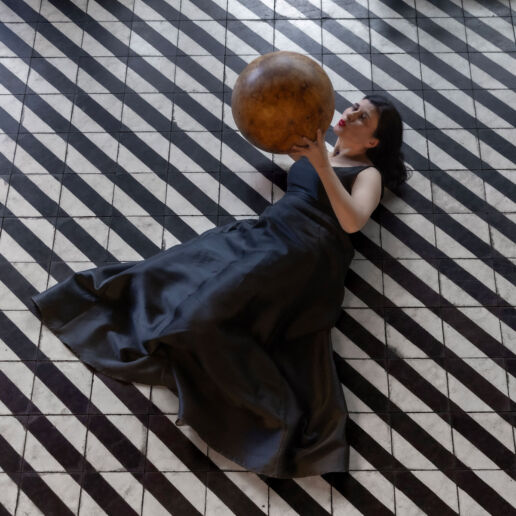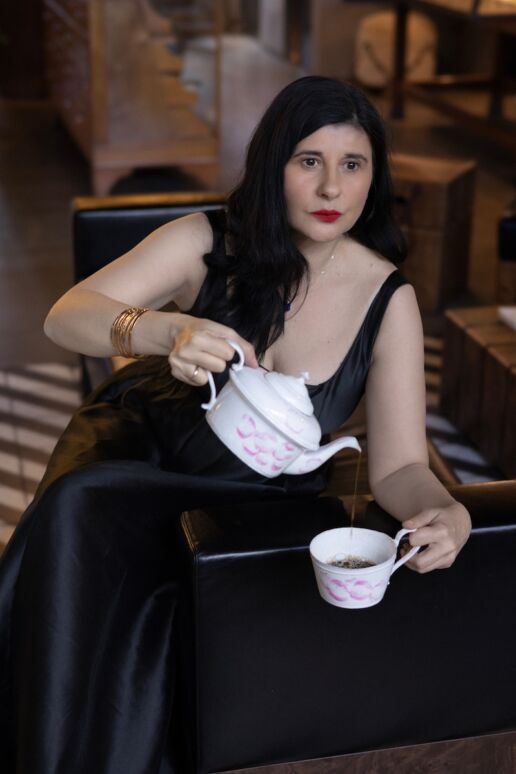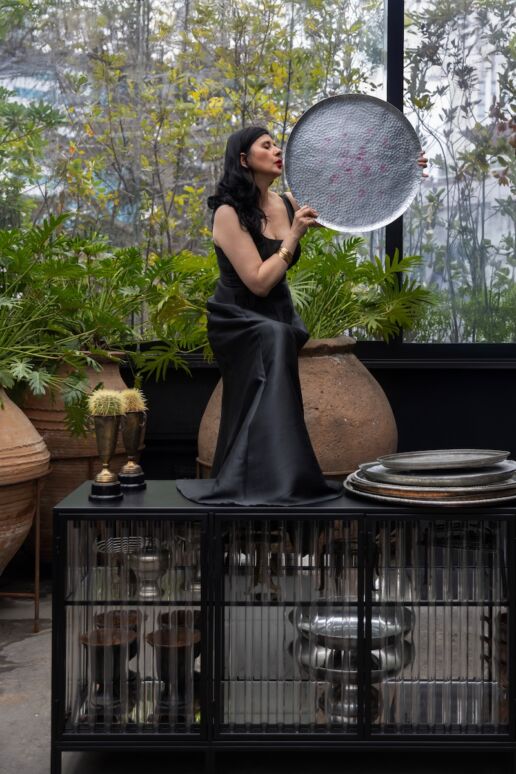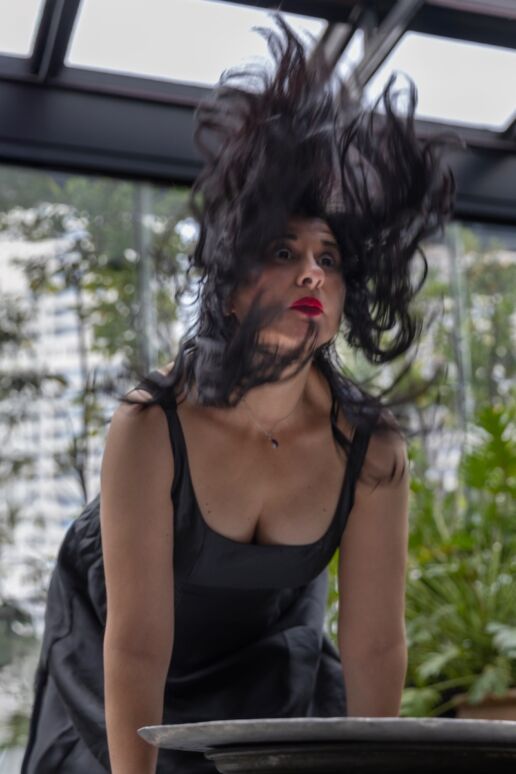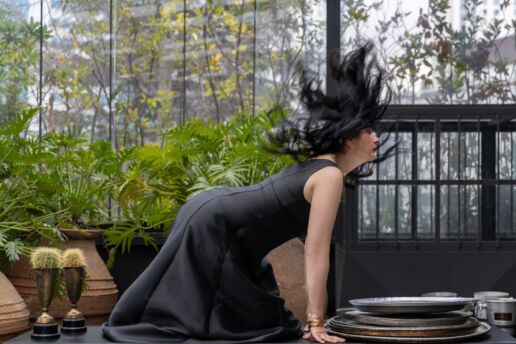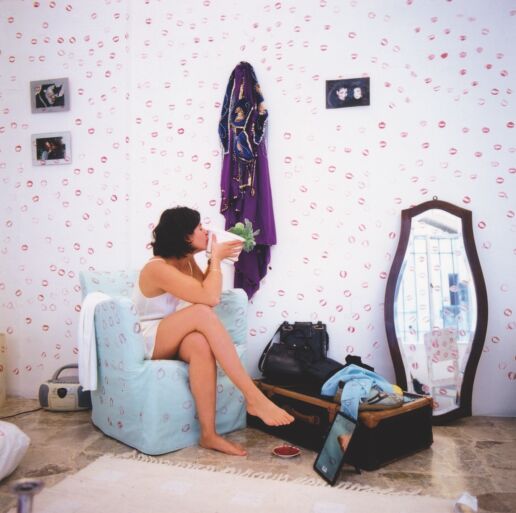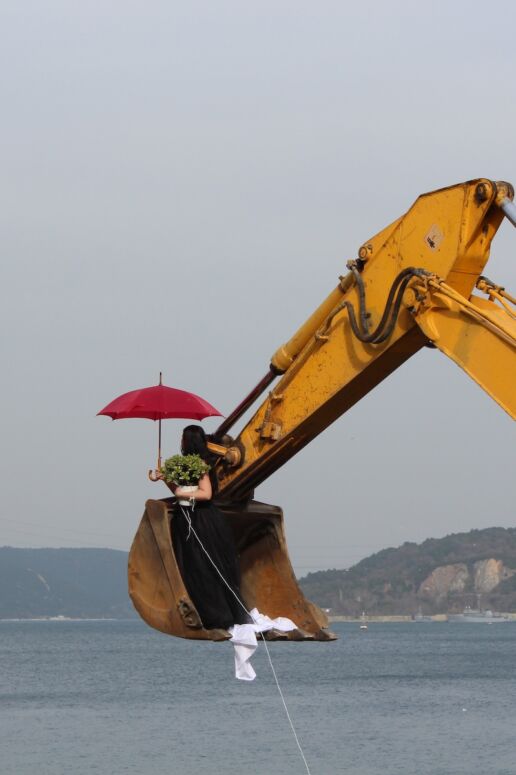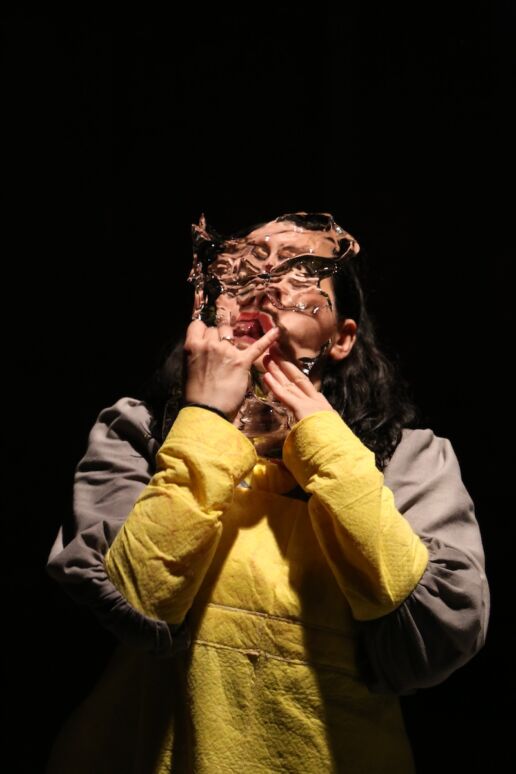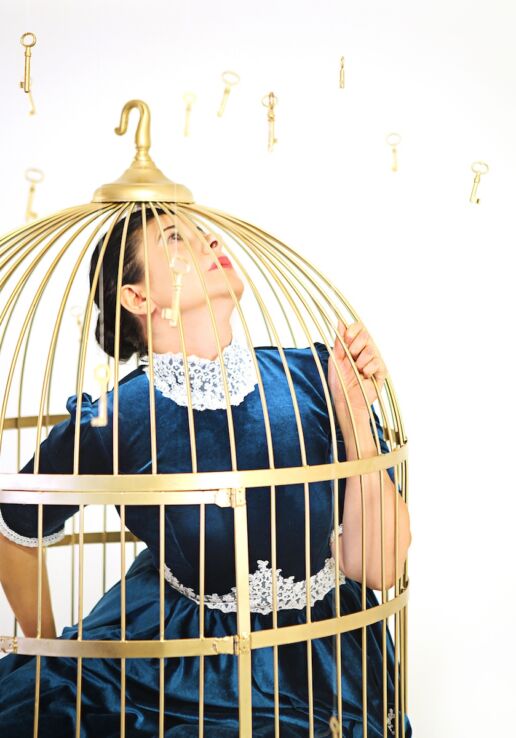PAYING TRIBUTE TO THE UNSEEN
Sanayi313’s tenth anniversary issue brings together craftsmanship, creativity and art with Nezaket Ekici, a protégé of the legendary Marina Abramović who went on to become a pioneer of modern and postmodern performance art. Known for thought-provoking performances that blend humor and seriousness, she engages with her Turkish heritage while challenging the German culture in which she was raised. Her work is conceptually and philosophically oriented and each piece can be regarded as a total work of art. Ekici graces our cover in a still shot from the piece Emotion in Motion, during which she kisses objects to honor the unseen labor that went into making them. This act beautifully mirrors Sanayi313’s philosophy, paying tribute to the dedication, effort and stories behind everything that we create.Photography Nazlı Erdemirel
PAPER Nezaket, you are an amazing artist and an exceptional performance artist. How would you define the art of performance? What distinguishes it from other types of art?
NEZAKET EKİCİ Artwork created through actions performed by an artist is very interesting. You are creating art in front of the public with the public, in a particular space. Everything exists for that moment, not like a painting or a sculpture where you create a two- or three-dimensional piece that will continue to exist over time. Live performances are created with a spontaneous energy alongside the people watching it. This is the challenge and I like that.
P During your performances, I see you face some challenge. You struggle, feel pain and demonstrate physical strength. Do these feelings have any relationship to feelings you’re experiencing in your personal life at the time of each performance?
NE Yes, but don’t forget, beside the pain and struggle there are also humor and fun. That is what makes the difference. There is humor in one eye and there are tears in the other. If I’m personally feeling pain in that moment, I express it. If I’m feeling pleasure, I present that to the audience. What I perform is the honest, deep emotion that comes from the soul.
P As we got to know each other, I realized that traditions are important to you. You are wearing traditional Turkish gold bracelets. You are married to the man who was your first boyfriend even though he is German. How does the contemporary art you perform find inspiration in the life of this traditional woman?
NE I was born in Türkiye in 1970 and went to Germany with my family when I was three years old as part of the “Gastworker Family“ program (Gastarbeiter Familie). We lived in a Turkish community in Germany where there were few opportunities to integrate into German culture. So Turkish tradition was very important. With time, school and the study of German culture became increasingly important for me, as well. And then I married a German and as an artist working worldwide I grew more international in my world view. I am Turkish, German and international. All those personas exist in me at the same time. The childhood memories, Turkish and German rituals, and even some other cultures’ rituals, are very important foundations for my performances.Working with the movement of the body and with repetition creates rituals in the end. So, on the one hand, I am very modern and on the other, very conservative. My art is a reflection of that contradictions and I think that makes it more interesting. Don’t forget where you come from but always pay attention to the zeitgeist, to what’s going on around you in the culture.
P Your tradition to Sanayi313 PAPER’s tradition – we always work with artists for our covers. We had an amazing photo shoot with you. Your performance Emotion in Motion is on our cover now. I find the idea behind it in perfect alignment with Sanayi313’s mindset. You pay tribute to the labor behind the things we use in our daily lives by kissing them. Please tell me about this idea. How did it come to life?
NE Emotion in Motion started in 1998 when I was a student. I began kissing objects; chairs, tables, personal items without much thought. Over time, it evolved into a deeper reflection on gratitude. The kiss leaves marks, like a painting, and expresses appreciation for the unseen effort it takes to create these objects. I’ve performed this in 10 countries, from galleries, museums to public spaces, sometimes for many days. The experience is physical: kissing hard walls can be painful, while cool porcelain or soft pillows bring relief. It’s about valuing labor, connection, and beauty outside of their monetary value. I even involve people who enter my space, kissing them as a gesture of thanks. Emotion in Motion reminds us to appreciate what we often take for granted.
P During the photo shoot we did with you at Sanayi313, you posed while kissing different objects. And you always looked at the photos, trying to visualize a scenario. From this point of view, how would you describe your photo shoot at Sanayi313?
NE It was such an inspiring experience. Your space felt warm and alive, full of plants, beautiful designs, antiques and modern touches. It’s as if each corner told its own story, waiting to be discovered. I felt like I was not just posing but experiencing Sanayi313 as a place. It was a new experience for both of us. You mentioned no one had done a shoot like this before and I loved creating something unique. I particularly remember integrating myself into the space: the corner with the plants and half-mirror, the white coffee service and the winter garden.
P I would love to talk about all your performances but there are so many, more than 313. 😊 Let’s talk about a few. Heaven Island is one of my favourites. How did you decide to live on a crane in Tarabya? How was the experience?
NE The idea came to me out of frustration. I was living in a beautiful villa during an artist residency program in Tarabya at The Tarabya Cultural Academy Istanbul, surrounded by gardens, with a view of the Bosporus. But construction started in front of my window and a crane blocked my view of the water. It drove me crazy! One day, I walked up to the crane operator and asked, “Can I live on your crane?” He looked at me like I was mad but agreed, “It’s dangerous, be careful.”
I decided to transform the crane into my home. I brought a pillow, a blanket, a flower, my mirror, and even a lamp with batteries for light at night. Getting everything up there was another challenge. I used a rope, the way so many people in Istanbul transport food, objects and sometimes even furniture to high floors using baskets. It was windy at the top and the crane was small, but the view was breathtaking. I could see far across the water, all the way to the Black Sea.
The performance wasn’t live. It was captured on video. I treated it as if I was creating a living sculpture, playing with scenarios. Sometimes I held an umbrella, sometimes I wrapped myself in a blanket, or simply sat there, becoming part of the landscape. It was about isolation, beauty, and creating a moment of unexpected harmony on a construction site. For me, Heaven Island turned an obstruction into an opportunity. It became a reflection of Istanbul itself; its contrasts, its heights, and its ever-changing views.
P Another favorite is Pars Pro Toto. In this performance, you spend a lot of time trying to melt a huge piece of ice. The world has succeeded in melting icebergs. I think the climate change issue is very important. Would you please elaborate on the idea behind this amazing performance?
NE The performance addresses a global crisis; the melting of ice, rising sea levels and the consequences for places like New York, the Netherlands, or islands and lowlands that could disappear. I was invited to perform in an old, disused factory where generators were once used to power hot and cold water systems. This inspired me to work with the contrast between heat and cold.
I chose to melt a large block of ice, symbolizing glaciers and our fragile environment. The performance used the energy created by the body, heated kettles and iron; each a step in accelerating the melting. I created a fountain system with four taps to collect the water, which I then reheated and poured back onto the ice. This cycle continued for five hours with the sound of dripping water adding a meditative quality to the experience.
Visually, it was striking: the block of ice under focused lighting, the transformation of its form as it melted and the fleeting sculptures that were created before disappearing again. It was about patience, change, and watching beauty dissolve—waiting for the very last drop.
The process was exhausting but profound. People came and went, sitting for hours in silence. For me, performing it for the first time made it even more powerful. I didn’t know how it would evolve, and that spontaneity, along with the interactions amongst the space, materials and emotion, gave the piece its soul.
P We value art and artists. As an artist with Turkish roots, who lives in Europe, I wanted to hear your opinion about the contemporary and performance art world in Türkiye.
NE The art scene in Türkiye has evolved tremendously. Many historical sites have been transformed into cultural spaces and initiatives like biennials are happening across the country. Not just in Istanbul, but also in Çanakkale, Mardin and Sinop. This expansion brings fresh energy and opportunities.
Today, there’s a growing movement, particularly among younger artists. However, I feel there’s still confusion about what performance art truly is. People often group it with theater, dance, or acting, but performance art, especially having emerged from the visual arts, has its own identity. I find it encouraging to see interdisciplinary works emerging and I support this evolution. Still, I believe we need to develop a clearer language to define performance art and its place within contemporary art. Overall, there’s real progress and I’m optimistic about its future.
P Art curator Beral Madra once wrote of you that, as you perform, your expression springs from your innermost being and your heart, always reflecting your “fearless, free, and compassionate spirit.” Do you have any messages from the heart for our readers?
NE Keep your eyes open to the world, see the big picture. Yes, times are hard and we face crises everywhere, but we must not lose sight of beauty. Sanayi313, for example, brings people together to celebrate creativity and beauty, and this is something we need more of. In Germany, where I live, the art and culture sector are facing significant cuts. Funding for museums, theaters and independent spaces is being reduced and artists are already struggling. We’re fighting to protect these resources but it’s a challenging time. Still, initiatives like subsidized artist studios in Berlin where artists pay very little rent give me hope. So, my message is this: Even in difficult times, don’t lose yourself in the negativity. Seek beauty, hold on to it and keep finding moments of happiness. Art helps us focus, connect and remember what matters. We need that more than ever.
- But all that glitters is not gold
- Videoperformance 2014
- Camera: Güvenç Özgür, Yunus Emre Aydın
- Editing: Branka Pavlovic Sound: Janja Loncar
- Photo: Güvenç Özgür
- Techniciens: Artin Ahoron, Volkan Kaplan, Ali Güvenç Atılgan,
- Costume Design: Nezaket Ekici
- Dresscutter: Belgü Moda Evi
- Filmed at The Tarabya Cultural Academy Istanbul


